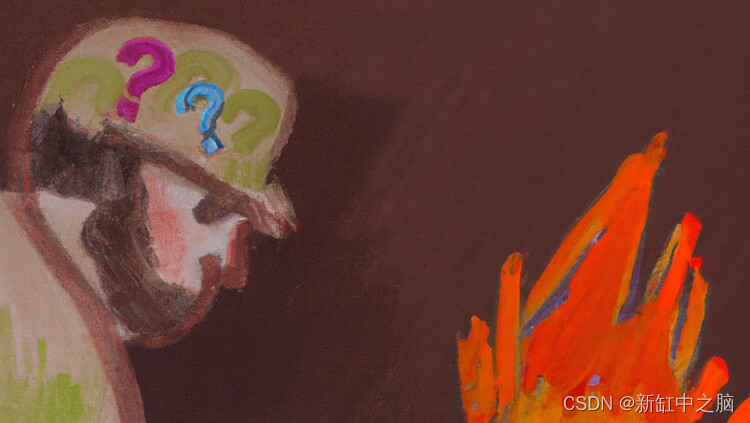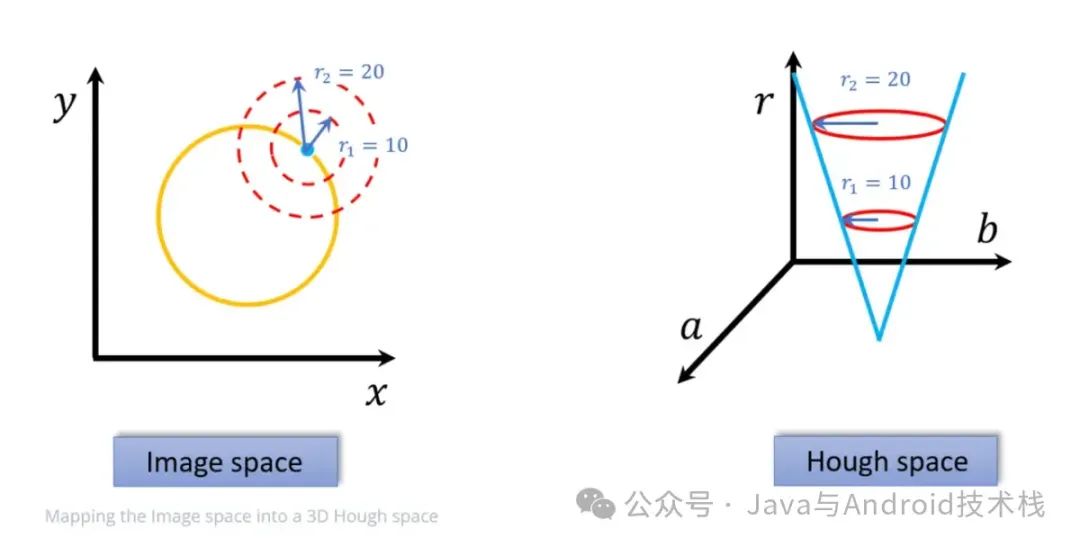在本文中,我们将利用 Hugging Face Diffusers 库的组件实现自己的稳定扩散模型,可以像 diffuser.diffuse() 一样简单地生成图像。

在线工具推荐: Three.js AI纹理开发包 – YOLO合成数据生成器 – GLTF/GLB在线编辑 – 3D模型格式在线转换 – 可编程3D场景编辑器
1、概述
在我们开始使用代码之前,让我们回顾一下扩散器的推理工作原理。
- 我们向扩散器输入提示。
- 该提示通过文本编码器给出数学表示(嵌入)。
- 产生了潜在的噪声。
- U-Net 结合提示来预测潜在的噪声。
- 与调度程序一起从潜在噪声中减去预测噪声。
- 经过多次迭代后,去噪后的潜在图像被解压缩以生成最终生成的图像。
2、环境搭建
! pip install -Uqq fastcore transformers diffusersimport logging; logging.disable(logging.WARNING) # <1>
from fastcore.all import *
from fastai.imports import *
from fastai.vision.all import *3、获取组件
要处理提示,我们需要下载CLIP分词器和文本编码器。 分词器会将提示分割成标记,而文本编码器会将标记转换为数字表示(嵌入)。
from transformers import CLIPTokenizer, CLIPTextModel
tokz = CLIPTokenizer.from_pretrained('openai/clip-vit-large-patch14', torch_dtype=torch.float16)
txt_enc = CLIPTextModel.from_pretrained('openai/clip-vit-large-patch14', torch_dtype=torch.float16).to('cuda')U-Net将预测图像中的噪声,而VAE将对生成的图像进行解压缩。
from diffusers import AutoencoderKL, UNet2DConditionModel
vae = AutoencoderKL.from_pretrained('stabilityai/sd-vae-ft-ema', torch_dtype=torch.float16).to('cuda')
unet = UNet2DConditionModel.from_pretrained("CompVis/stable-diffusion-v1-4", subfolder="unet", torch_dtype=torch.float16).to("cuda")调度器(scheduler)将控制最初添加到图像中的噪声量,还将控制从图像中减去 U-Net 预测的噪声量。
from diffusers import LMSDiscreteScheduler
sched = LMSDiscreteScheduler(
beta_start = 0.00085,
beta_end = 0.012,
beta_schedule = 'scaled_linear',
num_train_timesteps = 1000
); schedLMSDiscreteScheduler {
"_class_name": "LMSDiscreteScheduler",
"_diffusers_version": "0.16.0",
"beta_end": 0.012,
"beta_schedule": "scaled_linear",
"beta_start": 0.00085,
"num_train_timesteps": 1000,
"prediction_type": "epsilon",
"trained_betas": null
}4、定义生成参数
生成所需的六个主要参数是:
- prompt:提示
- w, h:图像的宽度和高度
- n_inf_steps:描述输出图像的噪声程度的数字(推理步数)
- g_scale:描述扩散器应遵循提示的程度的数字(引导尺度)
- bs:批大小
- seed:种子
prompt = ['a photograph of an astronaut riding a horse']
w, h = 512, 512
n_inf_steps = 70
g_scale = 7.5
bs = 1
seed = 775、编码提示
现在我们需要解析提示。 为此,我们首先将其分词,然后对得到的标记进行编码以生成嵌入。
首先,让我们进行分词:
txt_inp = tokz(
prompt,
padding = 'max_length',
max_length = tokz.model_max_length,
truncation = True,
return_tensors = 'pt'
); txt_inp{'input_ids': tensor([[49406, 320, 8853, 539, 550, 18376, 6765, 320, 4558, 49407,
49407, 49407, 49407, 49407, 49407, 49407, 49407, 49407, 49407, 49407,
49407, 49407, 49407, 49407, 49407, 49407, 49407, 49407, 49407, 49407,
49407, 49407, 49407, 49407, 49407, 49407, 49407, 49407, 49407, 49407,
49407, 49407, 49407, 49407, 49407, 49407, 49407, 49407, 49407, 49407,
49407, 49407, 49407, 49407, 49407, 49407, 49407, 49407, 49407, 49407,
49407, 49407, 49407, 49407, 49407, 49407, 49407, 49407, 49407, 49407,
49407, 49407, 49407, 49407, 49407, 49407, 49407]]), 'attention_mask': tensor([[1, 1, 1, 1, 1, 1, 1, 1, 1, 1, 0, 0, 0, 0, 0, 0, 0, 0, 0, 0, 0, 0, 0, 0,
0, 0, 0, 0, 0, 0, 0, 0, 0, 0, 0, 0, 0, 0, 0, 0, 0, 0, 0, 0, 0, 0, 0, 0,
0, 0, 0, 0, 0, 0, 0, 0, 0, 0, 0, 0, 0, 0, 0, 0, 0, 0, 0, 0, 0, 0, 0, 0,
0, 0, 0, 0, 0]])}标记 49407 是一个填充标记,表示 '<|endoftext|>'。 这些标记的注意力掩码为 0。
tokz.decode(49407)'<|endoftext|>'txt_emb = txt_enc(txt_inp['input_ids'].to('cuda'))[0].half(); txt_embtensor([[[-0.3884, 0.0229, -0.0523, ..., -0.4902, -0.3066, 0.0674],
[ 0.0292, -1.3242, 0.3076, ..., -0.5254, 0.9766, 0.6655],
[ 0.4609, 0.5610, 1.6689, ..., -1.9502, -1.2266, 0.0093],
...,
[-3.0410, -0.0674, -0.1777, ..., 0.3950, -0.0174, 0.7671],
[-3.0566, -0.1058, -0.1936, ..., 0.4258, -0.0184, 0.7588],
[-2.9844, -0.0850, -0.1726, ..., 0.4373, 0.0092, 0.7490]]],
device='cuda:0', dtype=torch.float16, grad_fn=<NativeLayerNormBackward0>)txt_emb.shape
torch.Size([1, 77, 768])6、CFG 的嵌入
我们还需要为空提示(也称为无条件提示)创建嵌入。 这种嵌入用于控制引导。
txt_inp['input_ids'].shapetorch.Size([1, 77])max_len = txt_inp['input_ids'].shape[-1] # <1>
uncond_inp = tokz(
[''] * bs, # <2>
padding = 'max_length',
max_length = max_len,
return_tensors = 'pt',
); uncond_inp我们使用提示的最大长度,因此无条件提示嵌入与文本提示嵌入的大小相匹配。
我们还将包含空提示的列表与批量大小相乘,以便每个文本提示都有一个空提示。
{'input_ids': tensor([[49406, 49407, 49407, 49407, 49407, 49407, 49407, 49407, 49407, 49407,
49407, 49407, 49407, 49407, 49407, 49407, 49407, 49407, 49407, 49407,
49407, 49407, 49407, 49407, 49407, 49407, 49407, 49407, 49407, 49407,
49407, 49407, 49407, 49407, 49407, 49407, 49407, 49407, 49407, 49407,
49407, 49407, 49407, 49407, 49407, 49407, 49407, 49407, 49407, 49407,
49407, 49407, 49407, 49407, 49407, 49407, 49407, 49407, 49407, 49407,
49407, 49407, 49407, 49407, 49407, 49407, 49407, 49407, 49407, 49407,
49407, 49407, 49407, 49407, 49407, 49407, 49407]]), 'attention_mask': tensor([[1, 1, 0, 0, 0, 0, 0, 0, 0, 0, 0, 0, 0, 0, 0, 0, 0, 0, 0, 0, 0, 0, 0, 0,
0, 0, 0, 0, 0, 0, 0, 0, 0, 0, 0, 0, 0, 0, 0, 0, 0, 0, 0, 0, 0, 0, 0, 0,
0, 0, 0, 0, 0, 0, 0, 0, 0, 0, 0, 0, 0, 0, 0, 0, 0, 0, 0, 0, 0, 0, 0, 0,
0, 0, 0, 0, 0]])}uncond_inp['input_ids'].shapetorch.Size([1, 77])uncond_emb = txt_enc(uncond_inp['input_ids'].to('cuda'))[0].half()
uncond_emb.shapetorch.Size([1, 77, 768])然后我们可以将无条件嵌入和文本嵌入连接在一起。 这允许根据每个提示生成图像,而无需通过 U-Net 两次。
embs = torch.cat([uncond_emb, txt_emb])7、创建噪声图像
我们将创建一个64 x 64 像素的单个潜在图像,并且也有 4 个通道。 对潜在图像进行去噪后,我们将其解压缩为具有 3 个通道的 512 x 512 像素图像。
bs, unet.config.in_channels, h//8, w//8(1, 4, 64, 64)print(torch.randn((2, 3, 4)))
print(torch.randn((2, 3, 4)).shape)tensor([[[ 0.2818, 1.9993, -0.2554, -1.8170],
[-0.5899, 0.6199, 0.4697, 0.8363],
[ 0.4416, -1.1702, 0.0392, -1.3377]],
[[ 1.6029, 0.2883, -0.4365, 0.5624],
[-1.4361, -0.6055, 0.9542, -0.2457],
[-1.4045, -0.2218, 0.3492, -0.1245]]])
torch.Size([2, 3, 4])torch.manual_seed(seed)
lats = torch.randn((bs, unet.config.in_channels, h//8, w//8)); lats.shapetorch.Size([1, 4, 64, 64])潜在张量是 4 阶张量。 1 指的是批量大小,即生成的图像数量。 4 是通道数,64 是高度和宽度的像素数。
lats = lats.to('cuda').half(); latstensor([[[[-0.5044, -0.4163, -0.1365, ..., -1.6104, 0.1381, 1.7676],
[ 0.7017, 1.5947, -1.4434, ..., -1.5859, -0.4089, -2.8164],
[ 1.0664, -0.0923, 0.3462, ..., -0.2390, -1.0947, 0.7554],
...,
[-1.0283, 0.2433, 0.3337, ..., 0.6641, 0.4219, 0.7065],
[ 0.4280, -1.5439, 0.1409, ..., 0.8989, -1.0049, 0.0482],
[-1.8682, 0.4988, 0.4668, ..., -0.5874, -0.4019, -0.2856]],
[[ 0.5688, -1.2715, -1.4980, ..., 0.2230, 1.4785, -0.6821],
[ 1.8418, -0.5117, 1.1934, ..., -0.7222, -0.7417, 1.0479],
[-0.6558, 0.1201, 1.4971, ..., 0.1454, 0.4714, 0.2441],
...,
[ 0.9492, 0.1953, -2.4141, ..., -0.5176, 1.1191, 0.5879],
[ 0.2129, 1.8643, -1.8506, ..., 0.8096, -1.5264, 0.3191],
[-0.3640, -0.9189, 0.8931, ..., -0.4944, 0.3916, -0.1406]],
[[-0.5259, 1.5059, -0.3413, ..., 1.2539, 0.3669, -0.1593],
[-0.2957, -0.1169, -2.0078, ..., 1.9268, 0.3833, -0.0992],
[ 0.5020, 1.0068, -0.9907, ..., -0.3008, 0.7324, -1.1963],
...,
[-0.7437, -1.1250, 0.1349, ..., -0.6714, -0.6753, -0.7920],
[ 0.5415, -0.5269, -1.0166, ..., 1.1270, -1.7637, -1.5156],
[-0.2319, 0.9165, 1.6318, ..., 0.6602, -1.2871, 1.7568]],
[[ 0.7100, 0.4133, 0.5513, ..., 0.0326, 0.9175, 1.4922],
[ 0.8862, 1.3760, 0.8599, ..., -2.1172, -1.6533, 0.8955],
[-0.7783, -0.0246, 1.4717, ..., 0.0328, 0.4316, -0.6416],
...,
[ 0.0855, -0.1279, -0.0319, ..., -0.2817, 1.2744, -0.5854],
[ 0.2402, 1.3945, -2.4062, ..., 0.3435, -0.5254, 1.2441],
[ 1.6377, 1.2539, 0.6099, ..., 1.5391, -0.6304, 0.9092]]]],
device='cuda:0', dtype=torch.float16)我们的潜在变量具有代表噪声的随机值。 这种噪声需要进行缩放,以便它可以与调度程序一起工作。
#| id: DgrthbcIEzVO
#| colab: {base_uri: 'https://localhost:8080/'}
#| id: DgrthbcIEzVO
#| outputId: 761f0f3c-010e-4dfa-b7a3-6d94d026d4cc
sched.set_timesteps(n_inf_steps); schedLMSDiscreteScheduler {
"_class_name": "LMSDiscreteScheduler",
"_diffusers_version": "0.16.0",
"beta_end": 0.012,
"beta_schedule": "scaled_linear",
"beta_start": 0.00085,
"num_train_timesteps": 1000,
"prediction_type": "epsilon",
"trained_betas": null
}lats *= sched.init_noise_sigma; sched.init_noise_sigmatensor(14.6146)sched.sigmastensor([14.6146, 13.3974, 12.3033, 11.3184, 10.4301, 9.6279, 8.9020, 8.2443,
7.6472, 7.1044, 6.6102, 6.1594, 5.7477, 5.3709, 5.0258, 4.7090,
4.4178, 4.1497, 3.9026, 3.6744, 3.4634, 3.2680, 3.0867, 2.9183,
2.7616, 2.6157, 2.4794, 2.3521, 2.2330, 2.1213, 2.0165, 1.9180,
1.8252, 1.7378, 1.6552, 1.5771, 1.5031, 1.4330, 1.3664, 1.3030,
1.2427, 1.1852, 1.1302, 1.0776, 1.0272, 0.9788, 0.9324, 0.8876,
0.8445, 0.8029, 0.7626, 0.7236, 0.6858, 0.6490, 0.6131, 0.5781,
0.5438, 0.5102, 0.4770, 0.4443, 0.4118, 0.3795, 0.3470, 0.3141,
0.2805, 0.2455, 0.2084, 0.1672, 0.1174, 0.0292, 0.0000])sched.timestepstensor([999.0000, 984.5217, 970.0435, 955.5652, 941.0870, 926.6087, 912.1304,
897.6522, 883.1739, 868.6957, 854.2174, 839.7391, 825.2609, 810.7826,
796.3043, 781.8261, 767.3478, 752.8696, 738.3913, 723.9130, 709.4348,
694.9565, 680.4783, 666.0000, 651.5217, 637.0435, 622.5652, 608.0870,
593.6087, 579.1304, 564.6522, 550.1739, 535.6957, 521.2174, 506.7391,
492.2609, 477.7826, 463.3043, 448.8261, 434.3478, 419.8696, 405.3913,
390.9130, 376.4348, 361.9565, 347.4783, 333.0000, 318.5217, 304.0435,
289.5652, 275.0870, 260.6087, 246.1304, 231.6522, 217.1739, 202.6957,
188.2174, 173.7391, 159.2609, 144.7826, 130.3043, 115.8261, 101.3478,
86.8696, 72.3913, 57.9130, 43.4348, 28.9565, 14.4783, 0.0000],
dtype=torch.float64)plt.plot(sched.timesteps, sched.sigmas[:-1])
8、去噪
from tqdm.auto import tqdm
for i, ts in enumerate(tqdm(sched.timesteps)):
inp = torch.cat([lats] * 2) # <1>
inp = sched.scale_model_input(inp, ts) # <2>
with torch.no_grad(): preds = unet(inp, ts, encoder_hidden_states=embs).sample # <3>
pred_uncond, pred_txt = preds.chunk(2) # <4>
pred = pred_uncond + g_scale * (pred_txt - pred_uncond) # <4>
lats = sched.step(pred, ts, lats).prev_sample #<5>9、解码
with torch.no_grad(): img = vae.decode(1/0.18215*lats).sampleimg = (img / 2 + 0.5).clamp(0, 1)
img = img[0].detach().cpu().permute(1, 2, 0).numpy()
img = (img * 255).round().astype('uint8')
Image.fromarray(img)
现在你就拥有了我们使用文本编码器、VAE 和 U-Net 实现的稳定扩散!
原文地址:https://blog.csdn.net/shebao3333/article/details/134638311
本文来自互联网用户投稿,该文观点仅代表作者本人,不代表本站立场。本站仅提供信息存储空间服务,不拥有所有权,不承担相关法律责任。
如若转载,请注明出处:http://www.7code.cn/show_38728.html
如若内容造成侵权/违法违规/事实不符,请联系代码007邮箱:suwngjj01@126.com进行投诉反馈,一经查实,立即删除!







